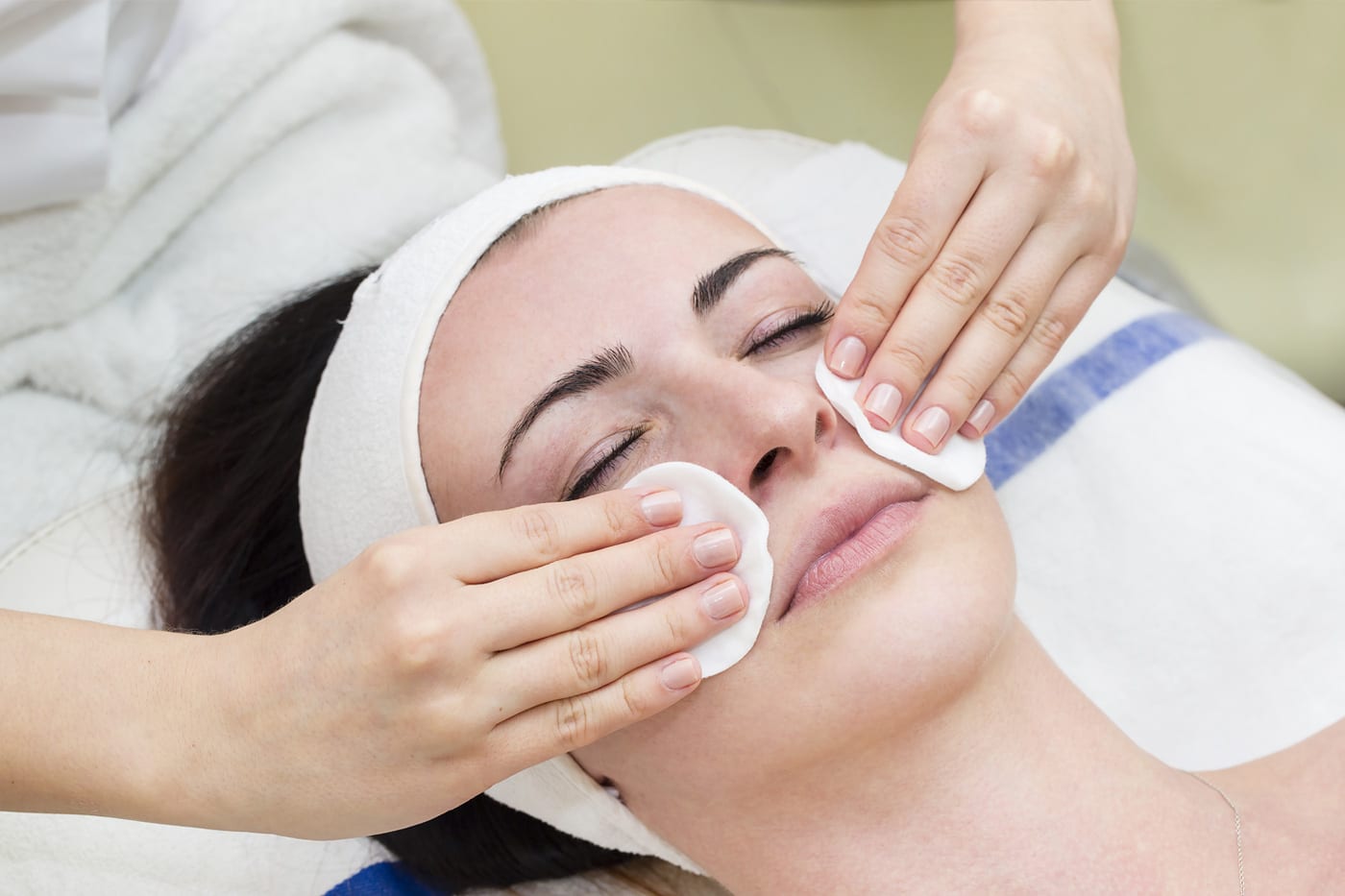“Since ancient times, different methods had been employed by women using acids for skin rejuvenation. Cleopatra used to take milk (lactic acid) baths infused with rose petals to give her skin a refreshing and healthy appearance with a natural glow. In addition to milk, many other natural fruit juice and flower extracts such as sugar cane juice (glycolic acid), orange and lemon juice (citric acid), rose water etc. were used for keeping a skin in a healthy and glowing state.
The Generations of Skin Peels
The advancement in research in the realm of skin rejuvenation and cosmetic medicine has to lead to the discovery that natural juices and extracts from fruits and plants contained chemicals which gently exfoliate or remove the dead and damaged skin layers to reveal a fresh, smooth and healthy skin with natural radiance. This leads the researchers to use the create chemical agents found in various natural foods to create powerful skin rejuvenating treatments referred to as ‘chemical skin peel treatments’.
Regular skin peel treatments fall into three distinct categories including light or superficial skin peels, medium and deep skin peels. Light and medium depth peels mostly suits to all skin types and is for treating multiple skin conditions with no to a little downtime and few temporary side effects. Deep skin peels, however, are not suitable for all skin types and has long recovery time.
Older generation peels
Chemicals skin peels are among the top rated non-surgical aesthetic treatments for skin resurfacing and rejuvenation. Older generation of peels comprise of the single ingredient or a peeling agent such as salicylic acid, glycolic acid or TCA. Strong levels of TCA is associated with long downtime (peeling, photosensitivity) whereas glycolic and salicylic by itself requires many sessions for any satisfactory results. Post-inflammatory hyperpigmentation (PIH) is a complication that required preventing by preparing the skin for weeks with a melanin inhibitor like hydroquinone, kojic or mandelic acids.
Fusion Skin Peels
Over time researchers came up with less aggressive peels blended with few other skin rejuvenating ingredients to soothe skin and minimise discomfort during the peeling phase. One such example is the Jessner’s peel which is perhaps one of first of fusion/cocktail skin peels containing resourcinal, lactic acid and salicylic acid.
Advent of Peel To Reveal
Skin peeling treatments have taken an innovative step forward with fusion or cocktail peel treatments containing potent skin rejuvenating ingredients and natural extracts other than peeling ones.
‘Peel to Reveal’ Harley Street Formulations belongs to this category of fusion peels which combine the qualities of exfoliators, resurfacers and skin peeling to give unparalleled results. It is a potent blend of chemical skin peeling agents infused with skin rejuvenating natural ingredients and enzymes to produce outstanding skin rejuvenation results. To understand the how Peel To Reveal improves the skin requires a basic understanding of biophysical changes in the skin that occur with ageing.
The skin is the largest organ in the body that in an adult occupies an area of about 2 meters squared. For an average adult of 70 kgs, the skin will contribute about 11kgs of the body weight. The skin is well supplied with blood vessels. If these blood vessels were to be stretched out, they could reach 18 kilometres. There are several hundred million cells on your skin with each square inch of it having as many as 19 million cells.
To know how the process of ageing works it is necessary to understand the basics of skin. The human skin is composed of three layers:
- Epidermis
- Dermis
- Subcutaneous tissues (Hypodermis)
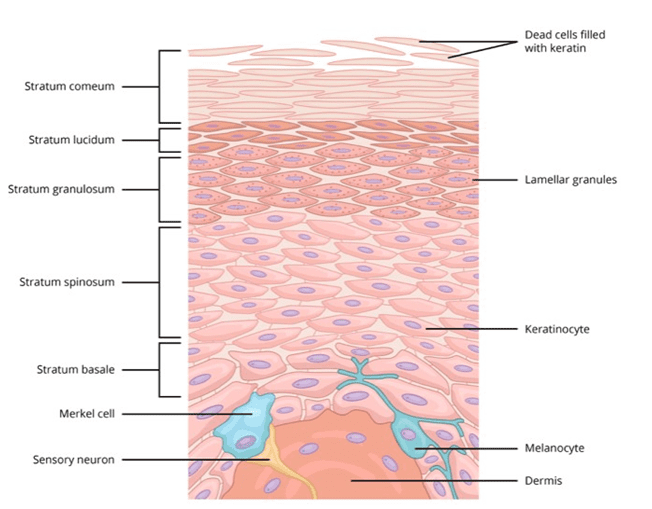
Epidermis
The surface layer of the skin is the epidermis which sheds dead skin cells and where melanin, the skin’s colour pigment, is present. The epidermis is composed of 5 layers. Keratinoctyes are born in the stratum basale and slowly die off as they reach the stratum corneum. The stratum corneum is referred to as the Skin Barrier arranged in a “brick and mortar” structure if you look at it from a cross section. On the surface, it has a slightly acidic hydro-film composed of sweat and sebum called the Acid Mantle. The skin barrier and the acid mantle combine to prevent entry of harmful substances such as bacteria, viruses and chemicals. Damage to them can lead to sensitivity & dryness often seen in females using excessive amount of moisturisers and cosmetics on the face. The stratum basale is the deepest layer where melanocytes are present.
Melanocytes have appendages reaching the upper layers of the epidermis and melanin can be released anywhere along their length.
Dermis
The second skin layer is the dermis which is thicker and is composed of collagen and elastin fibres as well as blood vessels which supply nutrients & hydration to dermis diffusing up into the epidermis.
Between the epidermis and dermis is the basement membrane composed of the DEJ (dermo epidermal junction). The DEJ is of great importance to cosmetologists.
Hypodermis
The subcutaneous layer comprises of fibrous bands known as ligaments to support the skin as well as fat cells that give volume and maintain temperature1.
Intrinsic Ageing
The process of intrinsic ageing begins regardless of the influence of external factors. Crossing 20 years of age the production of collagen decreases by 1% in the dermis each year2and natural exfoliation process slows down by almost a third. Build up of dead skin layers contribute to dry and rough skin texture, enlarged pores and fine wrinkles whereas thinning dermis leads to dynamic and static lines. Of note, the stratum corneum contains only 10-15% of the totalepidermal water in healthy young skin. With increasing thickness of the stratum corneum the water is distributed over many more layers.
During the 30s, the diffusion of nutrients from the dermis to the epidermis significantly slows down, as well as the fat cells begin to shrink. This gives a dull, lustreless, dry and thin appearance to the skin. In the 40s, the collagen production is reduced to the minimal and fibrous bands in the hypodermis supporting the dermis weaken resulting in skin sagging. Beyond the 40s, the skin lacks hydration, elasticity and become highly susceptible to damage because the sebaceous glands shrink in size.
Extrinsic Ageing
Extrinsic skin ageing on the other hand is caused due to environmental factors and external influences. External influences on the skin include damage due to free radicals which form as a response to UV radiation, pollution, smoking etc. As the biological cycle slows down there is a shift in the balance between oxidants (free radicals) and antioxidants in favour of oxidants. This is known as oxidative stress. Free radicals are capable of damaging existing collagen, elastin and hyaluronic acid as well as interrupting the production of these by the skin cells. Furthermore, free radicals can induce melanogenesis causing the production of excessive melanin (tanning). This can be seen on sun-exposed skin surfaces like the face from the early 20s onwards as dull, uneven skin tone and may progress to more markedly visible melasma/hyperpigmentation.
Makeup and foundations may help to “conceal” the issues but left untreated the issues are compounded with time.
[/expand]
- Widening of pores: Initially, the signs of ageing appears in the form of open or wide pores which results in more oil production. The dead skin cells, dirt and debris combined with oil, clog skin pores. This facilitates the growth of bacteria leading to skin inflammation. Compounded by elastosis (abnormal elastin usually due to sun damage) pores get larger permanently. Treatment involves a deep Cleanse
- Dyschromia: The skin tone becomes imbalanced due to the irregular and excessive deposition of melanin. Melanin is produced by melanocytes as a result of free-radical irritation and is more noticeable on the face because UV radiation. Free radicals also lead to impaired function of other cells in the skin such as fibroblasts and immune mediators. Treatment involves to Revitalise the skin with melanin inhibitors (skin brighteners) and antioxidants to reduce free radical damage.
- Hyperkeratosis: The superficial layer of dead skin cells cause thickening of the epidermis which gives rise to a dry, coarse and rough skin texture. Treatments encompasses to Exfoliate the skin. The thicker stratum corneum also holds a large amount of melanin further dulling the skin.
Thinning of skin layers: the epidermis and dermis become thin due to a loss of collagen, elastin, hyaluronic acid and other components of the extracellular matrix forming static lines. Treatments involve to Stimulate the various layers of the skin with ingredients that either directly or indirectly stimulate the production of collagen, elastin, hyaluronic acid as well as other extracellular matrix components. Direct stimulation at a cellular level is caused by retinoids, growth factors and peptides. Indirect stimulation involves processes that promote dermal remodelling via protein precipitation as well as regular exfoliation.
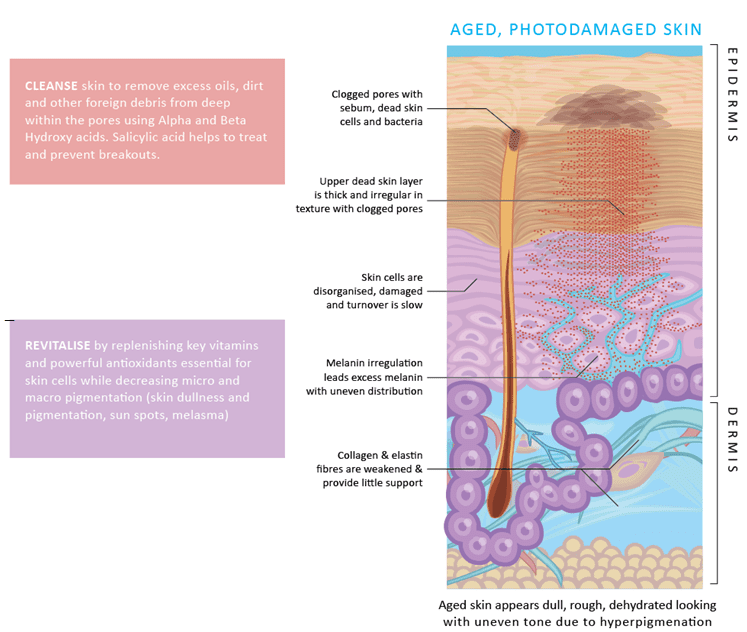
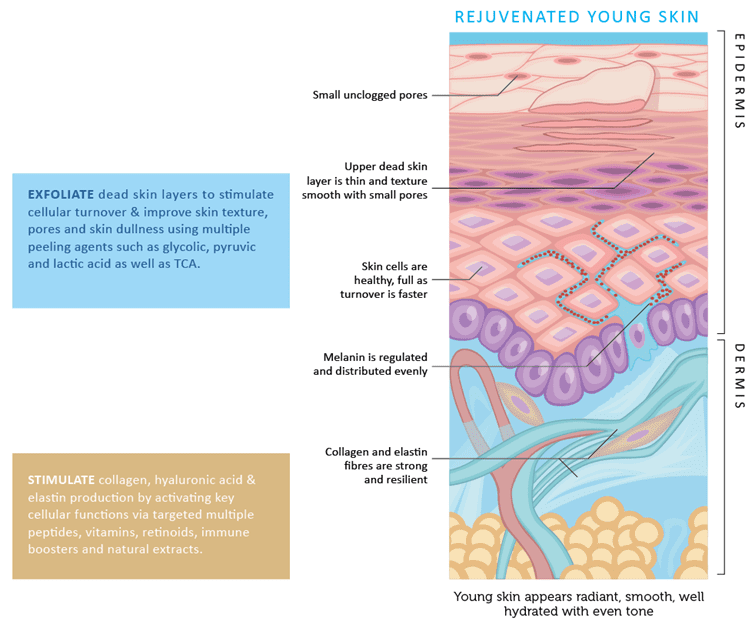
Peel To Reveal Works On The CRES Principle
Cleanse the skin deep into the pores reducing bacteria, removing sebum, dead skin cells and exfoliating the lining.
It is essential to remove makeup and dirt with normal everyday facial washes to maintain the skin’s integrity. However, effectively cleansing the pores with ordinary facial washes can be difficult.
Salicylic acid
This ingredient belongs to the family of beta hydroxy acids (BHA) and is most popularly used in acne washes. As it is fat soluble it penetrates deeper into the oily pores and removing trapped dirt, dead skin cells, waste by-products, makeup, sebum and other debris as well as exfoliating the lining. This makes it a good anti-comedogenic ingredient. It has stronganti-bacterial function known for decades (down-regulation of fibrinogen, fibronectin and alpha-haemolysin virulence factors). Other cleansing ingredients commonly used in every day cosmeceutical washes are other AHA molecules (lactic, glycolic, mandelic acids) that help exfoliate as well as cleanse the skin. AHAs are water soluble and do not penetrate the pores as deeply but nevertheless are very popular in skin cleansers for normal to dry skin types as they exfoliate the surface of the skin and preventing dead skin from trapping inside a pore.
Tea tree oil
It is derived from a plant Melaleucaalternifolia. Tea tree oil is a powerful antiseptic and possesses a capability of treating wounds. It is excellent for acne and acne prone skin, encourages wound healing and prevents infections. In one of a study, it was found that tea tree oil has a similar effect as that of benzoyl peroxide but with far fewer side effects3. It also helps to improve blemishes, dark spots and is a good for skin hydration.
Willow bark extract
It contains Salicylic acid which is a natural skin exfoliant. It has astringent, anti-inflammatory, calming, anti-microbial and conditioning qualities due to which it is used in a variety of skincare products. Willow bark extract helps to remove dead and damaged skin cells while deeply cleansing skin pores and stimulates generation of new skin cells. There are also some types of phenolic acids like salicin, salicortin, fragilin, populin, triandr in and vimalin, flavonoids, tannins and minerals in willow bark extract which helps in skin rejuvenation.
Revitalise the skin includes improving dyschromia and cellular function using melanin inhibitors and anti-oxidant to reduce free radicals.
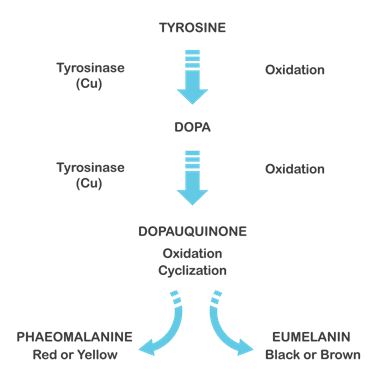
Glutathione (GSH)
Known as a master antioxidant, glutathione is the most prevalent antioxidant in our bodies. Glutathione (GSH) is composed of 3 amino acids. These are cysteine, glycine and glutamic acid. It prevents damage to important cellular components caused by reactive oxygen species such as free radicals, peroxides and heavy metals.
It binds to tyrosinase which inhibits the enzymatic pathways from production of melanin. In addition to this, GSH helps in inhibiting activation of tyrosinase. This reduces the production of free radicals. It also improves eumelanin (black & brown eumelanins) to pheomelanin ratio(pinkish red pigment). These conditions favour an increase in the production of melanin. GSHapplied topically also enhances collagen contraction in fibroblasts, protects the keratinocytes from apoptosis under hyperglycemic conditions. Visible effect on wrinkle reduction is shown in studies though the exact mechanism(s) is unclear.
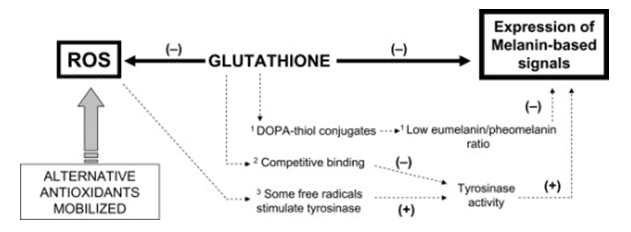
Kojic, Mandelic, Malic and Azelic Acid: In modern skin care and skin rejuvenation treatments, these acids hold significance importance.
Kojic acid is primarily known for its skin lightening properties. It is a tyrosinase inhibitor that acts directly on melanocytes (the cells producing melanin) reducing the production of melanin in the skin. It is an active ingredient that inhibits pigmentation process as well as a powerful antioxidant that prevents hyperpigmentation. This action of Kojic acid helps to reduce sun damage, solar lentigines and melasma. Clinical studies have proved that a combination of a kojic acid with glycolic acid give results similar to that of hydroquinone.4
Azelaic acid is another skin lightening agent that is derived from natural foods such as barley, wheat and rye. It is also effective for treating several skin conditions including acne, skin inflammation, rosacea and hyperpigmentation. Due to its anti-bacterial qualities, it prevents bacterial growth, inhibits keratinocytes (fat) production and regulates the function of the epidermis.
Mandelic acid is a type of AHA that has been found effective in the treatment of hyperpigmentation. It has anti-inflammatory and anti-ageing properties. It is effective for reducing melasma, dark or age spots. It accelerates production of new skin cells by removing dead skin cells and strengthens collagen which results in softening fine lines and wrinkles as well as improves the texture of skin.
Malic acid: It is derived from numerous unripe fruits and vegetables. Malic acid exfoliates and moisturises the skin while promoting the renewal of cells, fight off lines and wrinkles, reduce age or dark spots and freckles, tightens enlarged pores and helps in treating melasma and rosacea. It also aids in adjusting the skincare products pH to the optimal level.
Exfoliate the dead unwanted layers of the epidermis thereby improving skin texture as well as increasing cellular turnover and dermal constituents
AHA (Alpha Hydroxy Acids)
Glycolic, Lactic, Mandelic, Citric acids, Pyruvic
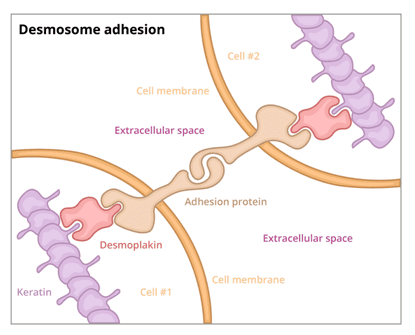
AHA is a group of chemical peeling agents. They are commonly in low concentrations as they are capable of absorbing more water than standard humectants like glycerine. Formulated in high concentrations and low pH they are interfere with the integrity of cell-cell adhesion molecules (desmosomes) resulting in exfoliating. They also improve other skin functions like the skin barrier and improve hydration (TEWL -trans-epidermal water loss) as well as increase hyaluronic acid. It helps to prevent photo-ageing through keratinocytes modulation of cytokines. Repeated exfoliation with AHA leads to epidermis basal cells renewal and improved fibroblasts activity supporting collagen synthesis.
Glycolic acid
Glycolic acid is the most commonly used AHA in skin care products in low concentrations. It has the smallest molecular size of all the AHAs and can penetrate the cell wall. This triggers the formation of collagen, dermal glycosaminoglycan (GAG) and other ground substances in the skin. Outside the cell-wall it loosens cellular adhesions thereby promoting exfoliation and cellular turnover.
Lactic acid
Lactic acid is typically derived from milk and is an excellent humectant which occurs naturally in the skin. The large molecular size of lactic acid is less irritating than glycol(smallest AHA molecule) and hence can be used at higher concentrations.
Citric acid
Another AHA that is found naturally in citrus fruits such as lemon, oranges etc. It is excellent in balancing and preserving skin balance and pH. It is an anti-oxidant with radical scavenging and anti-microbial activities.
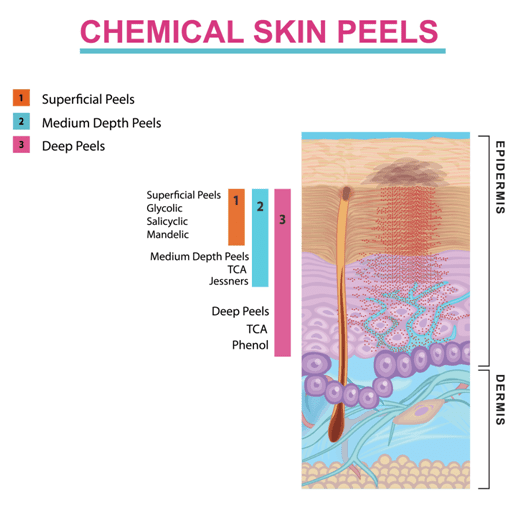
TCA (Trichloroacetic acid)
Trichloroacetic acid is used as a protein precipitant in clinical chemistry and due to its powerful chemexfoliation properties has been effective to remove warts. It is water soluble and penetrates through the dermis effectively allowing treatment of deep skin issues. Depending on formulating concentration and pH it can be controlled to penetrate the superficial or deep dermis. It combines the benefits of both AHA and BHA while reaching deeper and providing longer lasting effects. This makes it quite effective for treating freckles, sun damaged skin, hard to treat pigmentation, enlarged pores, scars and wrinkles. Like AHAs it increasing dermal re-modelling which increases collagen, elastin, hyaluronic acid as well other components of the dermal extracellular space. However, unlike AHAs usually, one to two treatments is sufficient to treat most cosmetic skin issues. TCA has a protein dissociation constant (pKa) of 0.52, making it an inherently stronger acid than AHAs (pKa of glycolic acid– 3.83). TCA is self-neutralizing within minutes after application, and appearance of a white frost indicates the endpoint of the peel. Lower concentrations of 10-35% reach up to the upper papillary dermis. Stronger concentrations are used less frequently in darker skin types due to scarring and post peel dyschromia.
Multiple Natural Extracts
The natural extracts from different plants and animals are widely being used in various skincare products due to their multiple benefits for skin rejuvenation.
Papaya fruit extracts: have a natural proteolytic enzyme called ‘papain’. It has amazing skin exfoliating qualities. It is known to be a powerful anti-oxidant and an immune booster which helps to fight off damaging free-radicals. It also has Vitamin A which is known to stimulate collagen and elastin production, increase turnover of new cells and stimulate new skin cells regeneration.
Bearberry extracts: It is derived from the bearberry leaves and has an active ingredient‘Arbutin’ in it. It possesses excellent astringent qualities and produces a natural skin lightening and whitening effect which makes it perfect for treating age or dark spots, pigmentation, vitiligo and freckles. It is a natural anti-oxidant that fights against free radicals while increasing cell turnover and provides natural protection against sun rays. When bearberry extract is blended with other skin rejuvenating ingredients it gently lightens the problematic areas without causing over bleaching effect. Its bacteriostatic actions fight against Staphylococci, which is a staph causing MRSA superbug.
Liquorice: The active ingredient of liquorice is glabridin that naturally inhibits production of skin pigment by preventing activation of tyrosinase. It prevents permanent skin discolouration and is non-toxic towards melanocytes and surrounding keratinocytes. It has potent anti-inflammatory qualities and helps to skin’s hydration.
Arginine: Also known as L-arginine is a form of semi-essential amino acid. It is an antioxidant, has anti-inflammatory qualities and facilitates healing, formation and remodelling of tissues. It aids in transporting other active ingredients under the surface of the skin and stimulates blood flow. This action makes it a natural skin moisturiser underneath the skin from inside out. In addition, it locks and balances the levels of moisture inside the skin while stimulating absorption. Due to its anti-oxidant function, it helps in building natural collagen which promotes skin elasticity.
References:
- 1C. Collin. How Does My Skin Anatomy Change as I Get Older? (2005)
www. health.howstuffworks.com/skin-care/information/anatomy/skin-anatomy-change.htm (26 Jan 2013). - 2S. Obagi. Why Does Skin Wrinkle with Age? What Is the Best Way to Slow or Prevent This Process?
www.scientificamerican.com/article.cfm?id=why-does-skin-wrinkle-wit (27 Jan. 2013). - 3Bassett, et al, “A comparative study of tea-tree oil versus benzoyl peroxide in the treatment of acne,” Med J Aust. 1990 Oct 15;153(8):455-8.
www.ncbi.nlm.nih.gov/entrez/query.fcgi? db=PubMed&cmd=Retrieve&list_uids=2145499 - 4www.ncbi.nlm.nih.gov/pubmed/10417583/
www.ncbi.nlm.nih.gov/pubmed/8634807/











